A Genealogist Explores St Kilda, Scotland.
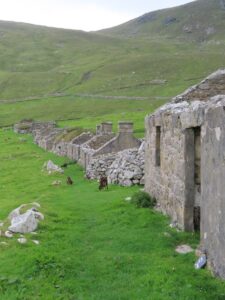
Main street of Hirta. Image by author.Off the west coast of Scotland beyond the Hebrides is a small archipelago of islands called St Kilda. The main island is Hirta and this is where a small community once lived. They survived off the land, sea and air. Although they had cows for milk, sheep for wool and fish from the sea, it was their harvesting of seabirds and their eggs that sustained them through their bleak winters. However, in 1930, this all came to an end when the last of the islanders left after there had been a gradual decline leaving only a handful of able bodied men.
I have been lucky to have just been one of the privileged few who have visited the island. It is now owned by The National Trust for Scotland and, as well as a small number of visitors, there are researchers and military personnel working on the island. Wandering around the deserted homes gave a feel for the desolation of the place but also the community that pulled together to survive.
As is the want of a genealogist, I became interested in the people. The small cemetery had very few legible headstones – the wind and rain having swept away the memorials to that past community. Thankfully, despite the remoteness of St Kilda, information about the inhabitants survives as they were part of the Scottish Civil Registration.
The oldest headstone in the forlorn cemetery that could be read stated:
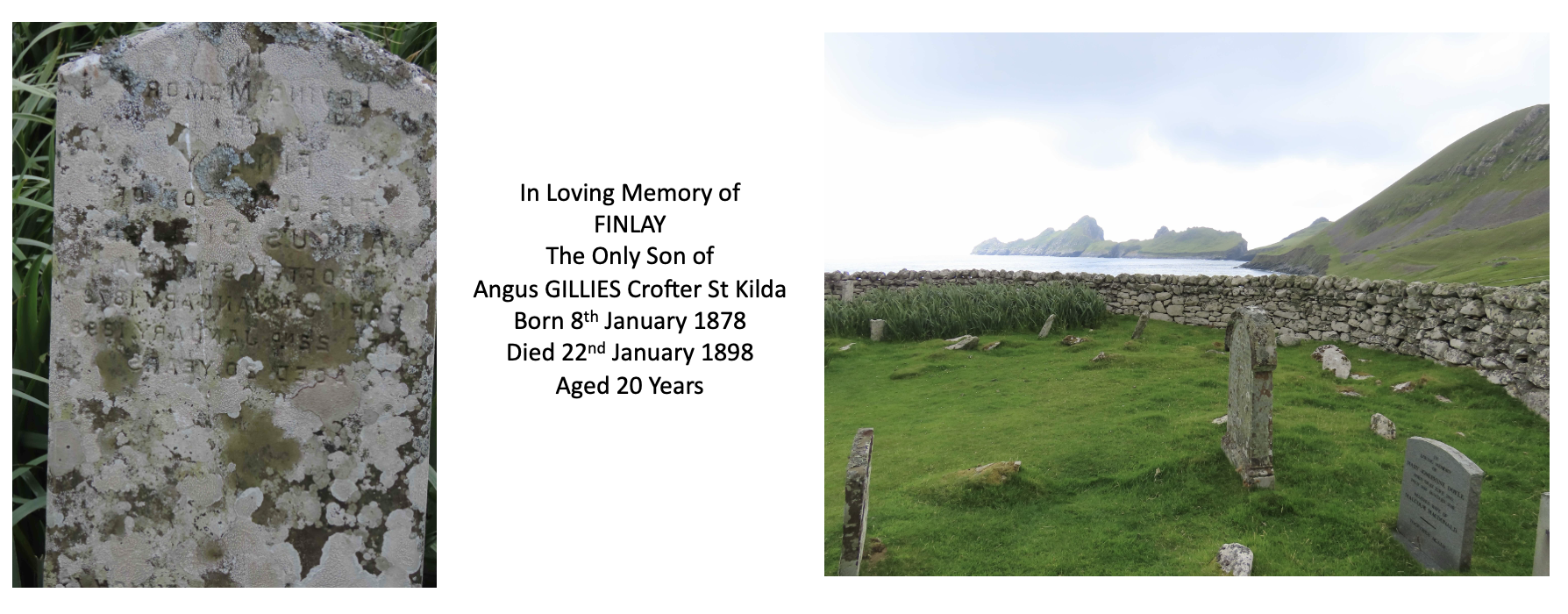
Tombstone of Finlay Gillies with the wording and view of the St Kilda Cemetery. Images by author.
Finlay’s death registration reveals that he died of Inflammation of the Lungs (which had lasted 24 days although there was no medical attendant involved in deducing that cause of death).[1] As a Shepherd (also recorded on the death registration), he would have been exposed to the cold, wet and windy weather that was typical on the island.[2]
Some of my fellow travellers were reading The Life and Death of St Kilda by Tom Steel.[3] In it, a photo showed the last wedding on St Kilda. It stated it was between Neil Ferguson and ‘the last eligible spinster’. As a family historian, as soon as we had a connection as there is no mobile data in that remote place, I had to give that ‘last eligible spinster’ a name.
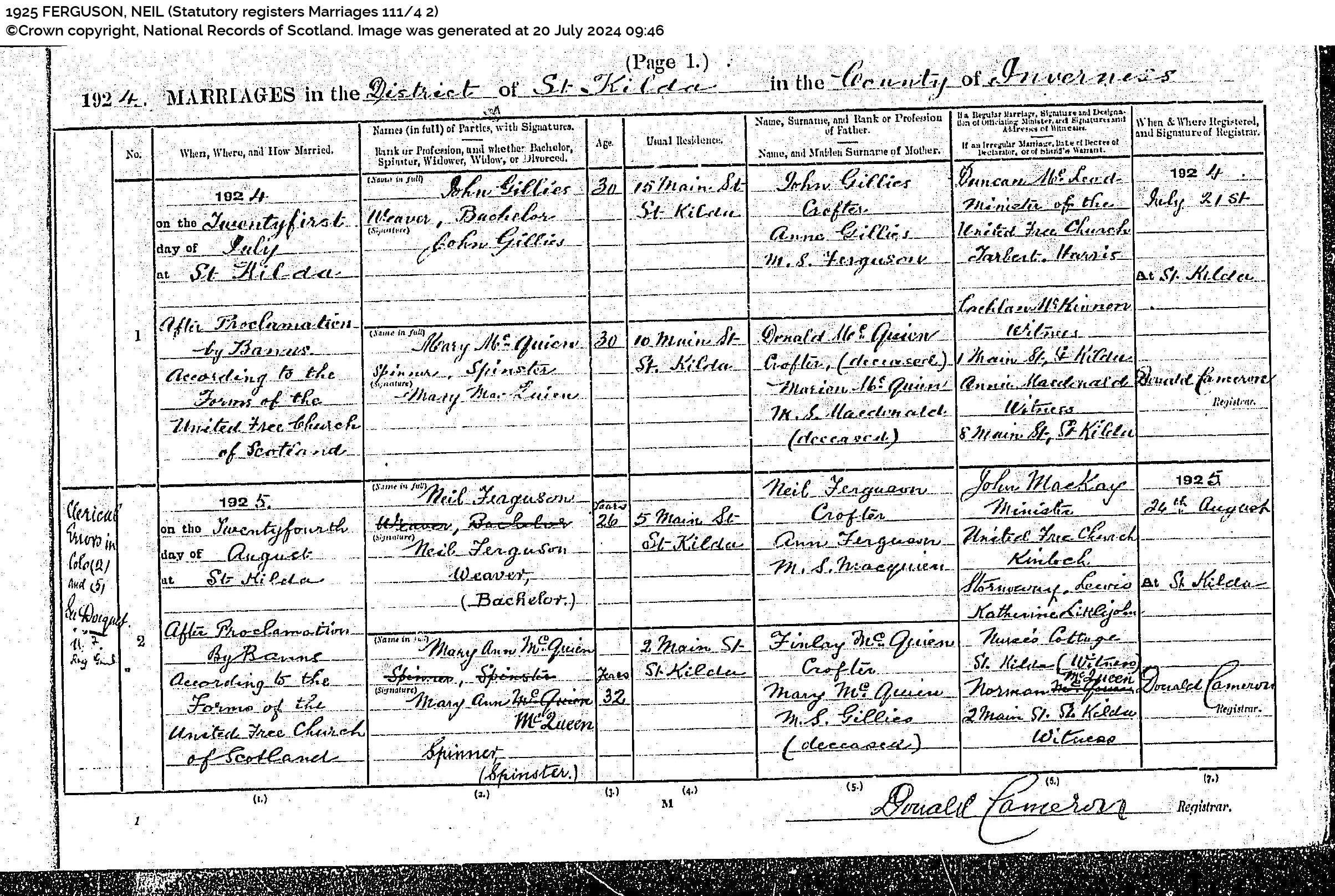
1925 – FERGUSON Neil & McQUEEN Mary – marriage – St Kilda. Authors collection.
I found the marriage (actually recorded four times on the marriage index at ScotlandsPeople) twice in 1925 and twice in 1930. The reference for all four entries was the same (111/4/2). Each year it was recorded twice giving slightly different spelling of the surname for the bride was Mary Ann McQUEEN or McQUIEN. However, this left the mystery of why it was recorded in both 1925 and 1930. So, of course I had to order the registration details. The 1925 registration showed that they married on 24 August 1925 at St Kilda according to the Forms of the United Free Church of Scotland.[4] Neil FERGUSON aged 26 years a Weaver and bachelor married Mary Ann McQUIEN (signed McQUEEN) aged 32 years a Spinner and spinster. Neil lived at 5 Main St while Mary lived at 2 Main St. Neil’s parents were Neil FERGUSON and Ann MacQUIEN. MaryAnn’s parents were Finlay McQUIEN and Mary GILLIES.
The second version with the 1930 date was identical to the first however capturing that the entry had been corrected in 1930.[5] There are many websites that provide more information about St Kilda and their inhabitants such as this one from the National Records of Scotland website at: https://www.nrscotland.gov.uk/research/learning/features/stories-from-st-kilda.
There is a link to Australia too. A significant exodus of inhabitants of St Kilda occurred in September 1852 when 36 inhabitants of St Kilda left for Australia on board the ‘Priscilla’. More can be read about this emigration on the ScotlandsPeople website: https://www.scotlandspeople.gov.uk/article/scotlands-history-emigration-st-kilda. The emigration was part of those enabled by the Highland and Island Emigration Society. Their records are now available to search and view for free under the Poor relief and migration records category on the ScotlandsPeople website: https://www.scotlandspeople.gov.uk/advanced-search/poor_relief#record-type. The records give extra information – in the case of some of the St Kilda emigrants it said Mr MacLeod, the Proprietor of St Kilda, has paid for the outfits and has undertaken to pay the deposits. Given he will have lost the rents from these inhabitants, it is interesting to see that he supported their departure.
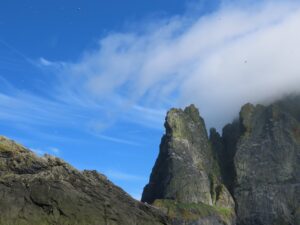
Bird Cliffs of Boreray. Image by author.
Alongside visiting St Kilda, I have been reading a fictional novel based on the last years on the island. It’s called The Lost Lights of St Kilda by Elisabeth Gifford.[6] It gives an insight to life on St Kilda as well as the dangers faced on the cliffs while harvesting birds. While in the small honesty shop on St Kilda, I found another book by Elisabeth Gifford called The Last Families on St Kilda which is a factual book giving photos and historical facts about the families that left in 1930.[7] The combination of books gives the insights of the benefits of taking a historical event and converting it into a fictional work. The fictional work is easier to digest and understand what is going on. This makes me consider if finding a way of writing up family history events in a story style may help my relatives discover more about their ancestors. It is important that we think about the best way to share our research. As long as we are clear what is fact and what is fiction, then putting some colour around the hard facts could mean that your relatives are at least interested enough to digest the historical facts along with an entertaining story. Do you have historical events in your family history that could work as a story?
[1] Death registration of GILLIES, Finlay. 22 January 1898. St Kilda, Scotland. Statutory registers Deaths 111/4 12, www.scotlandspeople.gov.uk, (accessed 21 July 2024).
[2] Climate section, http://world-heritage-datasheets.unep-wcmc.org/datasheet/output/site/st-kilda/ (accessed 21 July 2024).
[3] ISBN-13 978-0006373407.
[4] Marriage registration of FERGUSON, Neil and McQUEEN (aka McQUIEN), Mary Ann . 24 August 1925. St Kilda, Scotland. Statutory registers Marriages 111/4 2, www.scotlandspeople.gov.uk, (accessed 21 July 2024). Reference: 1925 FERGUSON, Neil (Statutory registers Marriages 111/4 2).
[5] Marriage registration of FERGUSON, Neil and McQUEEN (aka McQUIEN), Mary Ann . 24 August 1925. St Kilda, Scotland. Statutory registers Marriages 111/4 2, www.scotlandspeople.gov.uk, (accessed 21 July 2024). Reference: 1930 FERGUSON, Neil (Statutory registers Marriages 111/4 2).
[6] ISBN 978-1-7864-9905-9
[7] ISBN 978-1-5272-7175-3
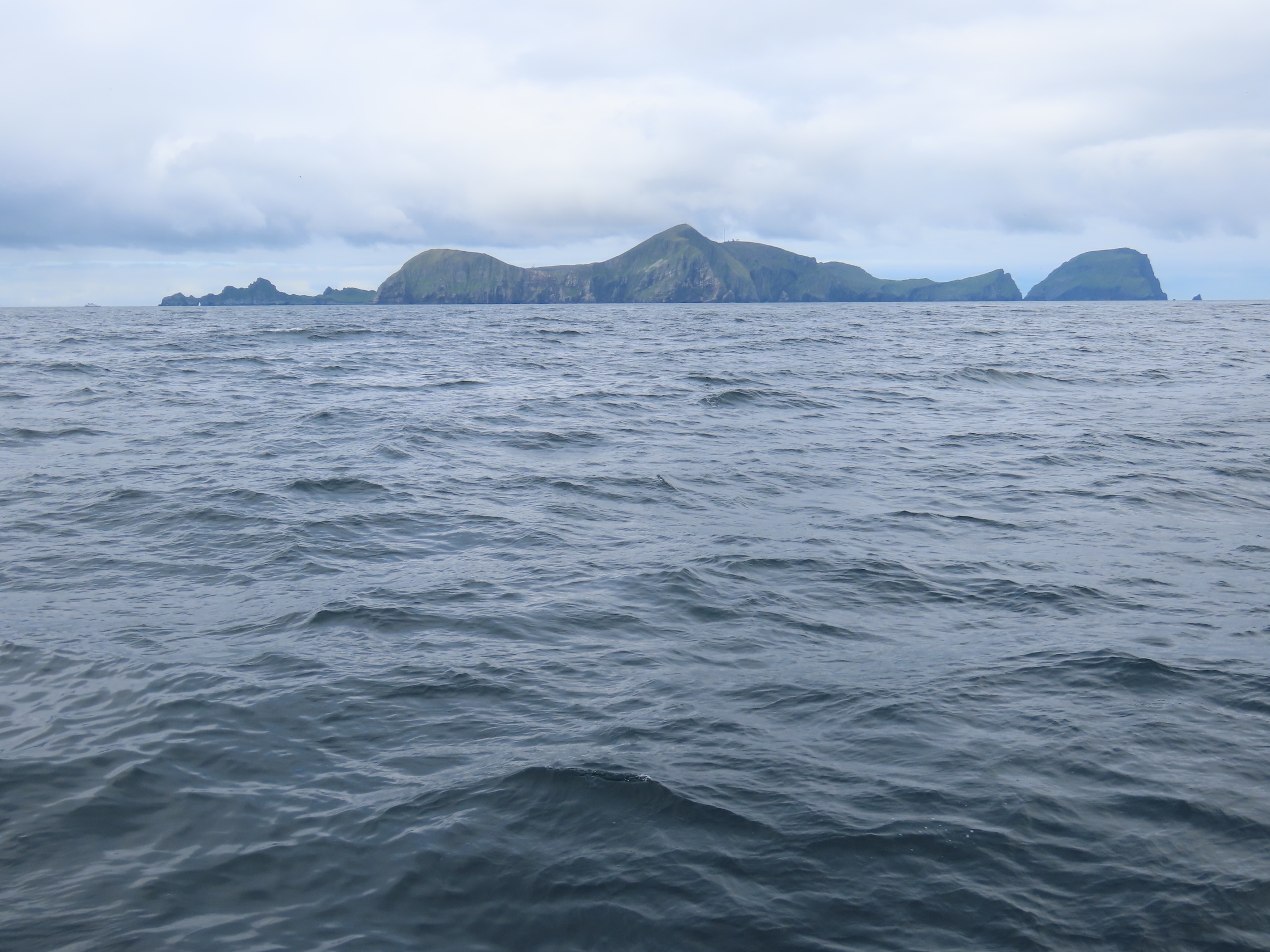
St Kilda archipelago. Image by author.

That’s really interesting Mia. Thank you. I have a GGG grandfather, Daniel Gillis marrying in Edinburgh in 1831 but haven’t found anything yet before that. I wonder if he came from St Kilda. I’ll have to go back to looking for him. Thanks for sharing.
Mia, I find your comments on fiction interesting as I strive to write up my family events by integrating genie evidence with historical facts. I will have to think about the other option some more.